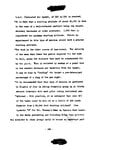yosimitesam
Airman 1st Class
Suppose you have a reasonably competent pilot, with reasonable hardware, on a reasonable day, an no one shooting at him (so maybe in training). How accurate was dive bombing? How likely would it be to hit a ship, or a pill box?
Here's some info where F4U's and SBD's were compared as dive bombers against land targets. The F4U lowered its landing gear for dive brakes. Apparently the F4U's landing gear was designed to take the stresses, as the usual 'max speed with gear down' restrictions didn't apply.

